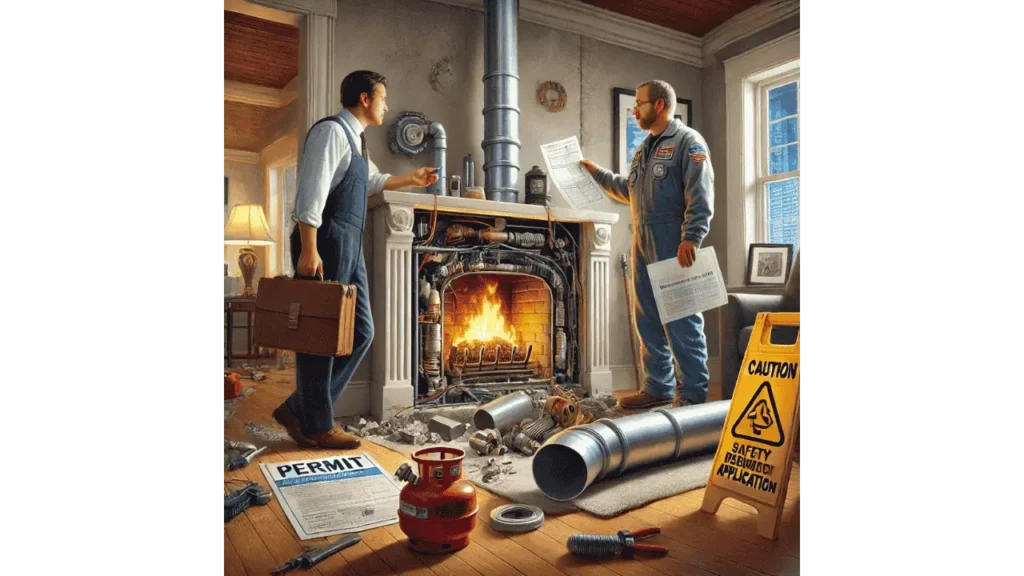Yes, a permit is often required when removing a gas fireplace. Many areas have regulations in place to ensure the process is handled safely and in accordance with building codes. Ignoring these rules can lead to complications down the line.
Exploring Permit Requirements
The need for a permit depends on local regulations. Some places consider fireplace removal a significant change to a home’s heating system, requiring official approval. Permits are in place to ensure proper disconnection of the gas line and to confirm that all work meets current safety standards.
Different regions may have varying guidelines, so it is important to check with the local building office before starting any work.
Just In: Installing Blower in a Gas Fireplace!
Factors Influencing Permit Necessity
The need for a permit can depend on several factors. The type of fireplace, how it was installed, and whether gas lines or ventilation systems need to be adjusted all play a role. If the project involves altering any structural elements or making modifications to existing gas connections, a permit is typically required.
Older homes with outdated systems may require additional steps to ensure everything is up to code.
Researching Permit Requirements
Before beginning the removal process, it’s important to gather information on local requirements. Contacting the local building department or visiting their official website can provide clear guidance on the necessary steps. Many areas outline specific requirements and documents needed for submission.
Consulting a qualified professional can also help clarify any uncertainties and ensure that everything is done correctly.
Steps to Obtain a Permit
Reach Out to the Local Building Office and find out what the requirements are and how to start the application process.
Fill Out the Application by providing the details about the project, such as property location and scope of work.
Submit Required Documentation, Plans, gas line information, and any necessary approvals should be included.
Pay Any Fees as costs may vary based on location and project complexity.
Schedule Inspections: Once approved, inspections ensure the removal is done safely and according to code.
Consequences of Proceeding Without a Permit
Skipping the permit process can lead to various issues. Homeowners may face fines, have trouble selling the property, or encounter safety risks due to improper work. Insurance providers might also deny claims if damage occurs as a result of unauthorized changes.
Read More: Putting Lava Rocks in a Gas Fireplace
Taking the right steps from the start ensures everything is handled correctly and avoids unnecessary setbacks.
Conclusion
Obtaining a permit before removing a gas fireplace helps avoid problems and ensures compliance with local rules. The permit process not only guarantees that the work is done safely but also ensures that all necessary inspections and approvals are in place. This can prevent potential hazards, such as gas leaks or improper venting, which could pose risks to the household.
Additionally, having the required permits provides documentation that may be useful when selling the home in the future. Prospective buyers often look for proof that any modifications were carried out legally and in accordance with building codes. Without this, selling the property could become more challenging. Homeowners should also consider that local regulations may evolve over time. Keeping up with current codes and permit requirements can help avoid unexpected issues and fines. By taking the necessary steps and following the correct procedures, homeowners can protect their investment and ensure their fireplace removal is completed safely and legally.
- 27 Farmhouse Fireplace Ideas That Bring Warmth & Charm - August 18, 2025
- 25 Fireplace Lighting Ideas to Illuminate Your Hearth - August 7, 2025
- How to Replace an Electric Fireplace Switch? - August 5, 2025



